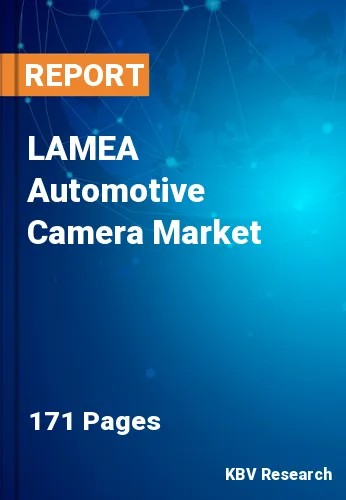
The Latin America, Middle East and Africa Automotive Camera Market would witness market growth of 12.1% CAGR during the forecast period (2023-2030). In the year 2026, the LAMEA market's volume is expected to surge to 3,497.4 thousand units, showcasing a growth of 13.6% (2023-2030).
Image sensor technologies form the bedrock of automotive cameras, and continuous advancements drive improved performance. High-resolution sensors, coupled with low-light sensitivity and enhanced dynamic range, ensure clearer and more reliable imaging. Innovations in sensor technologies contribute to the development of night vision systems and improved object detection capabilities.
Moreover, in response to the need for processing camera-generated data in real-time, edge computing solutions have emerged in vehicles. Edge computing facilitates the processing of data within the vehicle itself, reducing latency and enhancing responsiveness. This trend is particularly relevant for applications such as lane-keeping assistance, where instantaneous decision-making is paramount. Edge computing helps optimize bandwidth usage by reducing the need to transmit large volumes of data to a central server. This is particularly beneficial when bandwidth constraints exist or real-time communication with a centralized server is impractical.
A growing automotive sector in South Africa often leads to increased vehicle production. According to the International Trade Administration (ITA), the gross domestic product (GDP) of South Africa's automotive industry was 4.3% in 2021 (2.4% manufacturing and 1.9% retail). As the largest manufacturing sector in the economy, the production of vehicles and automotive components contributed a significant 18.7% of value-added to the domestic manufacturing output. In addition, the automotive industry, which continues to be one of the more prominent recipients of foreign investment, saw seven Original Equipment Manufacturers (OEMs) invest R8.8 billion in 2021, the second-highest annual amount ever, and the component industry also made a sizeable R5.7 billion investment. Thus, rising autonomous vehicle initiatives and the automotive sector in the LAMEA region will boost the demand for automotive cameras.
The Brazil market dominated the LAMEA Automotive Camera Market, by Country in 2022, and would continue to be a dominant market till 2030; thereby, achieving a market value of $391.1 Million by 2030. The Argentina market is showcasing a CAGR of 12.7% during (2023 - 2030). Additionally, The UAE market would register a CAGR of 11.7% during (2023 - 2030).
Free Valuable Insights: The Worldwide Automotive Camera Market is Projected to reach USD 16.4 Billion by 2030, at a CAGR of 10.5%
Based on Technology Type, the market is segmented into Digital Camera, Thermal Camera, and Infrared Camera. Based on Application, the market is segmented into Adaptive Cruise Control System, Park Assist System, Blind Spot Detection, Driver Monitoring System, Autonomous Emergency Braking System, Lane Departure Warning System, and Others. Based on Vehicle Type, the market is segmented into Passenger Car, Light Commercial Vehicle, and Heavy Commercial Vehicle. Based on countries, the market is segmented into Brazil, Argentina, UAE, Saudi Arabia, South Africa, Nigeria, and Rest of LAMEA.
By Technology Type (Volume, Thousand Units, USD Billion, 2019-2030)
By Application (Volume, Thousand Units, USD Billion, 2019-2030)
By Vehicle Type (Volume, Thousand Units, USD Billion, 2019-2030)
By Country (Volume, Thousand Units, USD Billion, 2019-2030)
Our team of dedicated experts can provide you with attractive expansion opportunities for your business.
